You’ve tried everything to clear your skin – and at the moment, none of it has worked, or worked long-term. So now you might be wondering, can you clear acne through diet? If you’re feeling a bit sceptical that something as simple as changing your diet can clear your acne, you’re not the only one. I’ve been there myself – back when I was suffering with acne and had tried everything, nutrition was my last resort, and it worked.
If you’ve not found a solution to your acne yet, it’s because what you’ve tried has only worked on the symptoms, not the causes. Acne isn’t just a surface-level issue; there’s a whole load of things happening beneath the skin’s surface. And the beauty of holistic nutritional therapy is that its primary focus is to find the cause of your acne – so you can enjoy clear, healthy skin for life. So let’s get into the causes of acne…
The Causes Of Acne
Before we get into the influence of nutrition, it’s essential to understand the four key players in acne formation: inflammation, excess oil production, bacteria, and blocked pores.
1. Inflammation
Inflammation plays a significant role in acne development. People with acne have been found to have higher levels of inflammatory markers within both the skin and the body. Skincare can work on the inflammation topically, but it can’t get to the internal inflammation that might be happening and then manifesting in the skin.
2. Excess Oil Production
The sebaceous glands in our skin produce an oily substance called sebum. In acne-prone individuals, these glands can go into overdrive, leading to oily skin that can clog pores. This can often be caused by hormonal imbalances that signal the sebaceous glands to produce more oil.
3. Bacteria
They changed the name of the acne-causing bacteria. So you’ll see it both up as P.acnes or C.acnes (confusing, I know!) – but Cutibacterium acnes (C.acnes), is its new name. This bacteria naturally resides on our skin; it actually makes up a healthy skin microbiome! We will find a healthy level of C.acnes on the skin of people who do not go on to develop acne. However, if there’s an overgrowth of C. acnes, alongside a build-up of oil and dead skin cells, it starts contributing to inflammation and breakouts. Meaning: you might get some white-pus-filled spots and cysts.
4. Blocked Pores
In people with acne, the skin struggles to naturally exfoliate itself properly, meaning that skin cells that should naturally float off, hang around a bit too long. The combination of excess ‘dead’ skin cells, sebum, and debris can accumulate and clog pores, creating the perfect environment for acne to flourish.
How Diet Can Help Clear Acne
So we know what’s happening to cause acne, but now we need to ask why are those things happening. Why do you have increased inflammation? Why do you have an imbalance in bacteria? Why are your sebaceous glands producing too much oil? Spoiler alert: it’s not because you’re cursed or because your skin hates you. It’s because there’s a whole load of stuff going on beneath the surface.
1. Reducing Inflammation
The food that you eat can either promote inflammation or reduce it. And by now, you know what outcome we want regarding reducing acne (we need to reduce inflammation). But to take it further and really get to the root of your acne, you do need to think about what’s causing inflammation in the first place. If we just each anti-inflammatory foods, but don’t get to the cause of the inflammation, it’s like having a bath that’s overspilling and just mopping up the water on the floor. We need to turn the tap off and pull out the plug! Here are a few things that can contribute to inflammation in the body and essentially, pull out the plug and turn the tap off:
- Bacterial or yeast infections
- Chronic viral infections
- Stress
- Lack of sleep
- Nutrient deficiencies
- Certain foods (especially if you have an intolerance or allergy)
- Toxins (like pollution, smoking and alcohol)
- Physical inactivity
- Hormonal imbalances
The good news? Holistic nutritional therapy focuses on finding the cause of your inflammation which we can do through testing and taking an in-depth initial consultation to look at symptoms. From there, diet can work on the cause. But, in the meantime, here are some foods that help to reduce inflammation:
- Fatty Fish: Rich in omega-3 fatty acids, fish like salmon and mackerel can help reduce inflammation and promote overall skin health.
- Colourful Fruits and Vegetables: Berries, leafy greens, and vibrant veggies are packed with antioxidants that combat inflammation.
- Herbs and spices: such as turmeric, ginger, garlic, green tea and rosemary.
2. Balancing Hormones and Oil Production
The main cause of excess oil production, or overactive sebaceous glands, is testosterone levels that are slightly too high. Or in some cases, your testosterone levels can be normal, but your body is making too much of the more potent androgen – DHT. Again, you need to understand why you’re producing too much testosterone, or DHT – some common causes include:
- Imbalances in blood glucose & insulin levels
- Inflammation
- Stress
- Physical inactivity
- Microbiome imbalances
But, some foods that work directly on testosterone include:
- Omega-3-Rich Foods: Apart from reducing inflammation, omega-3 fatty acids found in fish oil can regulate hormones and minimise excess oil production.
- Pumpkin seeds: As well as providing healthy fats and protein, pumpkin seeds are a great source of zinc, which helps to support hormones.
- Tomatoes: are high in lycopene, which can help to block the conversion of testosterone into DHT
- Green tea: Has a double effect on hormones – it can help to regulate insulin levels and block the conversion of testosterone into DHT.
3. Influencing the skin microbiome, via the gut
Remember that C.acnes alone isn’t the issue in acne – it’s the combination of an overgrowth of the bacteria (or absence of beneficial bacteria), alongside excessive oil production and inflammation. So if we’ve worked on balancing hormones and oil production – we’ve solved one piece of that puzzle. But let’s take a more holistic approach…
The fascinating thing about gut health is that whatever is going on in the gut, does not stay in the gut. Stuff in your gut gets around, which can be positive or negative. A positive thing can be that if your gut is full of diversity and contains lots of beneficial bacteria, they can help to support the immune system and have anti-inflammatory benefits – not just in the gut, but on the skin too. In fact, probiotic supplements have been found to reduce inflammation in people with acne and regulate bacteria within the skin – meaning that the bacteria in your gut can travel too. So a healthy gut microbiome = a healthy skin microbiome.
Again in the meantime, before you reach for those probiotic pills, here are some foods that help to boost beneficial bacteria:
- Probiotic Foods: These are foods that contain actual beneficial bacteria. Live yoghurts, kefir, sauerkraut, kimchi, kombucha and tempeh are all great choices. But you must ensure they’re not pasteurised, which will kill the bacteria, meaning you don’t get the probiotic benefits.
- Fibre-rich foods: Whole grains, legumes, and fruits support gut health by promoting the growth of good bacteria.
4. Preventing Blocked Pores
Everything we’ve already discussed will actually help to reduce blocked pores, and that’s because inflammation, bacteria and excess oil production can all contribute to a build-up in the pore. But we still need to talk about supporting a healthy skin cell cycle. In healthy skin, the skin cells make their way up from the base of the epidermis to the top, and shed when they’re ready (yes, your skin can naturally exfoliate). But in acne, this process doesn’t work correctly, meaning that skin cells hang around too long and end up causing blockages.
We must focus on two main areas to help with the skin cell cycle. Proper hydration and hormone regulation, both of which help regulate the natural process within the skin.
- Hydration: Drinking two litres of water won’t clear your acne alone, but it’s essential for hydrated skin and unblocked pores.
- Low-Glycemic Index Foods: Foods with a low glycemic index (GI) cause slower rises in blood sugar levels, which can help prevent hormonal fluctuations that lead to blocked pores.
And that concludes how diet can clear your acne!
Ready to start your journey to clear skin?
Hopefully, this has helped piece together the main causes of acne, the underlying drivers of acne, and how nutrition plays a role in regulating almost everything to do with acne. By finding and targeting the root causes of acne, it’s possible to harness the power of nutrition to achieve clear and radiant skin.
If you’re ready to begin your journey to healthy skin – I’m here to help. And if you’ve got questions, send them over to me.





0 Comments